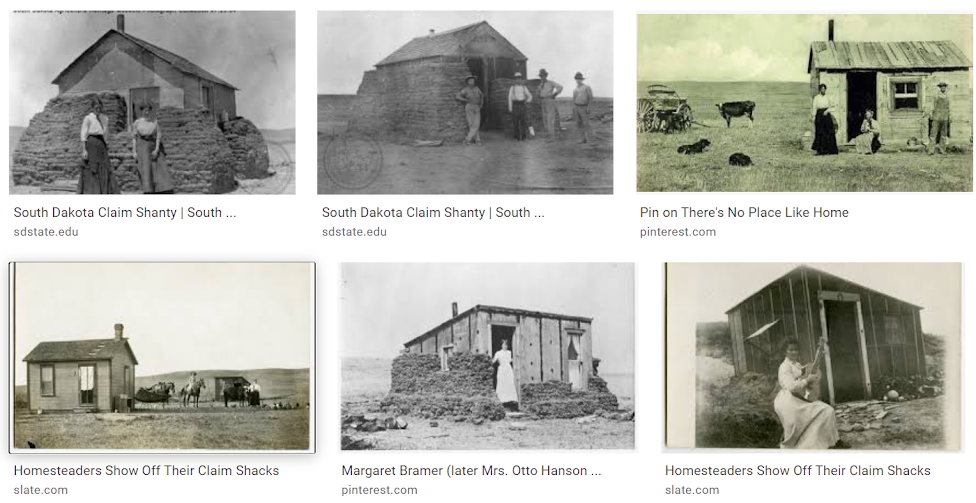Back to the Future
The tiny home movement is interesting. I am in favor of it. Living with less and making less of an impact on the environment is a worthy goal.
It is also back the future. For most of mankinds existence we lived in housing of moderate size.
All four sets of my great grandparents homesteaded in western South Dakota in first decade of the 1900. The claim shacks were built on site, sometimes with sod or dugouts. Tiny Houses.
Homestead Acts
The examples and perspective in this article or section may not represent an indigenous view of the subject. (October 2019) (Learn how and when to remove this template message) |
The Homestead Acts were several laws in the United States by which an applicant could acquire ownership of government land or the public domain, typically called a homestead. In all, more than 160 million acres (650 thousand km2; 250 thousand sq mi) of public land, or nearly 10 percent of the total area of the United States, was given away free to 1.6 million homesteaders; most of the homesteads were west of the Mississippi River.
An extension of the homestead principle in law, the Homestead Acts were an expression of the Free Soil policy of Northerners who wanted individual farmers to own and operate their own farms, as opposed to Southern slave-owners who wanted to buy up large tracts of land and use slave labor, thereby shutting out free white farmers.
The first of the acts, the Homestead Act of 1862, opened up millions of acres. Any adult who had never taken up arms against the Federal government of the United States could apply. Women and immigrants who had applied for citizenship were eligible. The 1866 Act explicitly included black Americans and encouraged them to participate, but rampant discrimination, systemic barriers and bureaucratic inertia slowed black gains.[1] Historian Michael Lanza argues that while the 1866 law pack was not as beneficial as it might have been, it was part of the reason that by 1900 one quarter of all Southern black farmers owned their own farms.[2]



No comments:
Post a Comment